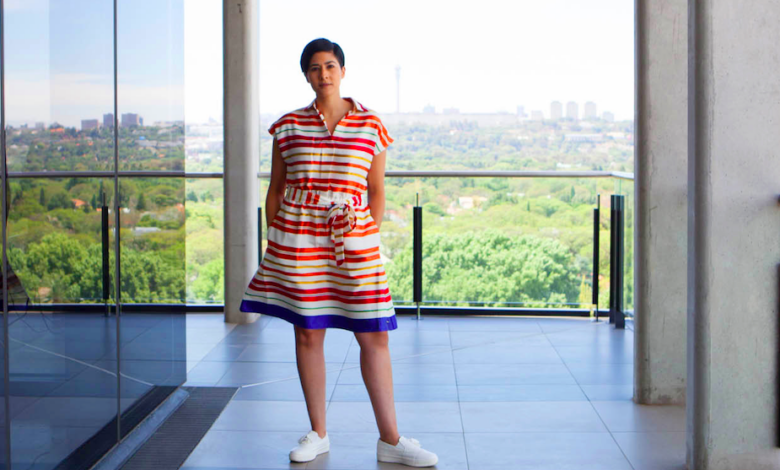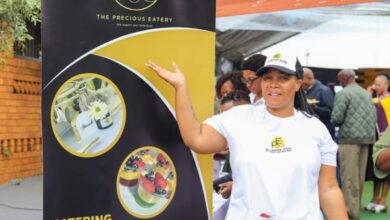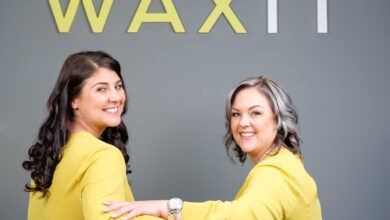Nisha van der Hoven, Founder Of Hoven Design Talks Architecture & Shared Workspace Designing

Nisha van der Hoven, Founder Of Hoven Design Talks Architecture & Shared Workspace Designing. With over 12 years in the game before starting her own practice it’s no surprise that Nisha recently curated an exhibition titled InCommon which investigates the possibilities of collective space. Check out the full interview below;
Please provide your full name, age and position within your organisation.
Name: Nisha van der Hoven
Age: 36
Position: Architect
Where are you originally from and when did you leave to go to Johannesburg?
I was born in Isipingo in KwaZulu-Natal and moved to Johannesburg when I was three years old.
What inspired you to become an architect and what is your area of specialisation?
As a child I was continuously drawing and re-imagining the spaces around me – having lived in a few cities growing up, I developed many connections between the spaces that I inhabited, and the stories and memories these spaces held. Studying architecture was an opportunity to curate relationships between people and place. As an architect, engaging with people is at the core of what we do, and shared workspace design became an area of interest for me. I’m constantly fascinated by the behaviours, patterns and culture of working environments and how we can design platforms for interaction that foster a culture of trust, community and the exchange of ideas.
How long have you been in the industry?
I worked for 12 years at Boogertman + Partners Architects before starting my own practice, Hoven Design.
What led you to become involved with designing office spaces? Was it a particular niche interest etc…
My interest in workspace design was sparked by a book by Susan Cain called Quiet. The book focuses on the many assumptions we make about how people perform in differently designed environments. This led me to question the design thinking around workspaces and how they enable people to perform and do their best work and still encourage multiple creative behaviours.
What is the link between a well designed office space and productivity, if any?
There’s been a recent shift in the way we work and at Workshop17 we see the need for workspaces to be curated to accommodate spontaneous flexibility – from individual quiet booths, semi-private work nodes and private meeting areas, to relaxation and social spaces designed for increased communication and collaboration. These elements work together to form a work neighbourhood designed to enhance levels of comfort, stimulation and productivity. The needs of an active and changing community, require a greater level of choice and customisation. Allowing people to play a role in the creation, curation and customisation of their working environments creates a sense of belonging, improves wellbeing, productivity and supports the behaviours required for creative thinking.
What has been the highlight of your career?
As the curator for FuturePart, I recently curated an exhibition titled InCommon which investigates the possibilities of collective space. InCommon as a theme talks to a need to shift the dominant social and spatial narrative of fear, mistrust, weakening social bonds and individualism, to that of inclusion, community and participation. Boogertman + Partners Architects were invited to present the 2020 opening exhibition for the University of the Witwatersrand School of Architecture and Planning and this was an opportunity to explore how critical reflective thinking can challenge the status quo and prompt new dialogues within the built environment.
The exhibition talks to common as a space and its possibilities and challenges and finding common ground between design, culture and context.
What has been the most difficult challenge of your career?
Working collaboratively can raise many challenges. Having a multi-disciplinary approach to projects involves having to develop new ways of working across disciplines and many more variables in order to achieve a shared vision. You’re always encountering curve balls and having to sometimes change course but that often invites new forms of collaboration. I’ve really had to learn to trust the process and keep reminding myself of that and try and instill faith in others to do so. It’s often difficult because you’re asking people or a practice to believe in something that hasn’t yet materialised.
What is the greatest misconception about architecture?
The biggest misconception about architecture is that architectural practice can continue the way it has been in a ‘tried and tested approach’. For a practice to remain relevant it needs to respond to the changing zeitgeist. The rate of change of technology has increased the ability to work on the move and organisations need to allow teams to interact from both within and outside of the organisation. Environmental awareness and the need for both mental and physical wellbeing has become more prevalent in the workplace. Economic pressures demand a more flexible workforce that responds to both physical flexibility and flexible work hours.
There is also a need for better work-life balance and with increased remote working, the need for human connection focusing on collaboration and teamwork has become increasingly important. Lastly, changing demographic needs requires us to review the workplace characteristics across generations.
What are your interests apart from architecture?
My approach to my work is very multi-disciplinary and my interests extend beyond the realm of architecture and interiors to include fashion and furniture design. These side pursuits enrich my process and have culminated in collaborative and meaningful projects.
What advice do you have for aspiring architects?
I believe in learning by experimenting and finding inspiration through the process of making. It is really important to keep challenging the process and questioning the relevance of what we do.
Given that coronavirus has led many people to work from home, what are some affordable tips that people can utilise to create a comfortable yet productive home office?
Find a private and comfortable space that is well lit, without too much glare, away from noise and distraction. Ensure the space has ample ventilation and even surfaces for your work process. Add some greenery or a pet to lift the mood. If necessary, adjust your seat height (with a cushion) to ensure good posture when working. Take regular breaks. Avoid loneliness by reaching out to a colleague over a phone or downloading free software that encourages sharing information and collaboration.





